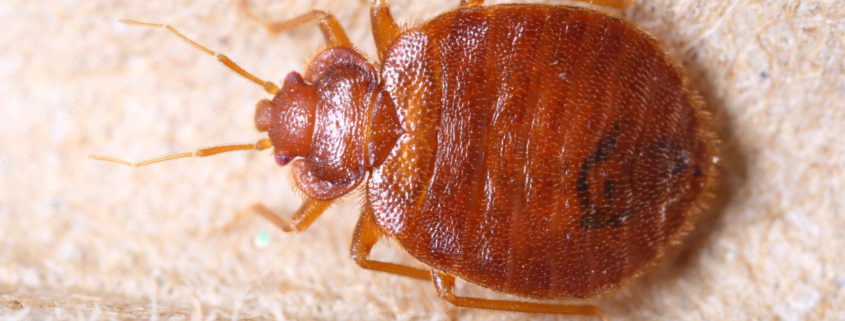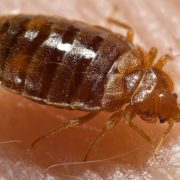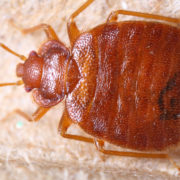What do Baby Bed Bugs Look Like?
Baby bed bugs are known as nymphs and if you see them, it means there is a very good chance that you have an infestation. Nymphs indicate that there is an infestation with females laying eggs. It also means that all of the adult bed bugs are feeding on human hosts, which is an annoyance and can make going to bed a little less comfortable. Due to this, it is crucial that all homeowners know how to identify nymphs that can indicate a much bigger problem.
The Appearance of Baby Bed Bugs
Nymphs are typically quite flat and no larger than a grain of rice. They are white and their shell is very soft, which makes them easy for homeowners to kill simply by pressing on them. Many people believe that baby bed bugs, or nymphs, are so small that they cannot be seen by the naked eye, but that is not true. However, because they are so small in appearance, they can be difficult to spot. Nymphs do not go through a metamorphosis like other insects and so, they look very similar to adult bed bugs.
All bed bugs are flat, but there is an exception when they feed. After they eat, their abdomens expand because of the food they have just consumed. This, however, is not visible with the naked eye and requires a microscope to observe. As such, it is not a viable method of distinguishing nymphs from adult bed bugs.
The Size of Baby Bed Bugs
Although the term ‘nymphs’ refers to baby bed bugs that have just been born, all bed bugs go through five juvenile stages before they are adults. During the first two of these stages, baby bed bugs are considerably smaller than adults. Still, even during these stages, bed bugs will become bigger with each stage. They will be larger in the second stage than they were the first, and larger still in the third stage than they were in their second. During the third stage, a bed bug will be approximately half of the size it will be as an adult.
The Color of Baby Bed Bugs
When bed bugs first hatch, they are entirely white or off-white in color. Bed bug eggs are the same color, which is why some people confuse the two. Bed bug nymphs will remain this color until they begin to feed.
After a bed bug feeds for the first time, it will have a round red spot in its abdomen. This is where they store the blood after they feed. Once they have digested this food, they will shed their skin and grow bigger. As nymphs begin to digest and grow, they will start to turn from white to brown. This is caused by the bed bugs using the nutrients from the blood that they eat from their host. As the bed bug babies grow into an adult bed bug, they will start to get browner and browner.
Adults are brown throughout their entire body. This is a result of feeding on a host on a regular basis. Once brown, bed bugs never return to their white color again.
Do Nymphs Crawl?
Anyone that has a bed bug infestation in their home may have seen them crawling around at some point. There is a good chance that when this happens, people are seeing adult bed bugs.
Bed bugs in general, no matter their age, do not crawl very quickly. The first reason for this is that they simply do not need to crawl fast. Their main method of survival is to hide rather than run away. Bed bugs also do not have very long legs. Rather, they are quite short and stubby. As a result, bed bugs are unable to run very quickly. Bed bugs also rarely travel at full speed. They reserve this only for when they sense danger but even then, they cannot move very quickly.
Baby bed bugs are even slower than adult bed bugs. Although they can crawl, they do not do so very often. Instead, they prefer to remain hidden rather than attempt to run away from a threat. They come out mainly at night, also to avoid running into any threats.
Contact Our Missouri Bed Bug Specialists for Help with Your Infestation
It is important to be able to identify bed bugs during all stages of their life. This is the only way to determine if you have an infestation. If you believe your home is infested with bed bugs, call our St. Louis bed bug specialists at Amco Ranger. We will conduct a free inspection to determine the severity of the infestation and advise on the methods we use to get rid of it. Call us today at (636) 223-4804 and say good-bye to bed bugs tomorrow.










